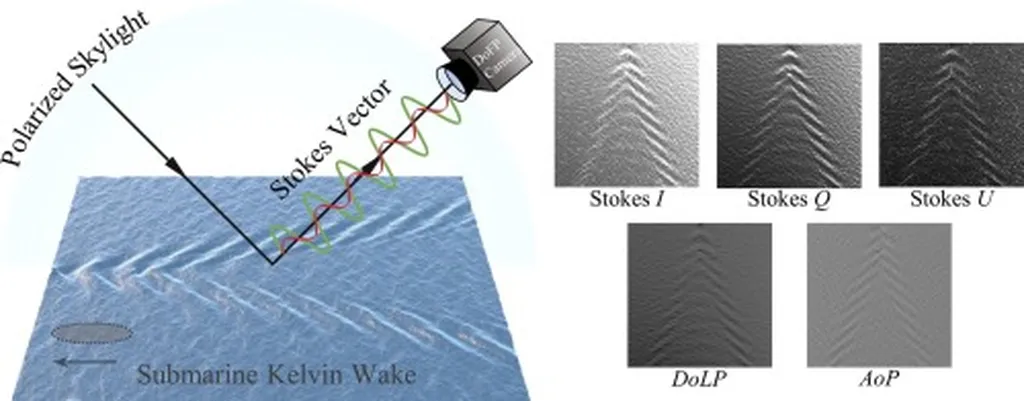In the vast expanse of the ocean, ships leave behind distinctive V-shaped waves known as Kelvin wakes. Capturing clear images of these wakes using optical remote sensing has been a challenge due to factors like sea-surface fluctuations, imaging noise, and weak reflectivity contrast. However, a recent study published in the journal ‘Applied Sciences’ (translated from German) offers a promising solution to this problem. The research, led by Mingzhu Song from the College of Information Science and Technology at Dalian Maritime University in China, introduces a multi-objective parameter stochastic optimization method for time-delayed integration optical remote sensing systems.
So, what does this mean for maritime professionals? In simple terms, the study proposes a way to optimize the parameters of optical remote sensing systems to obtain clearer images of Kelvin wakes. The method involves constructing a framework that integrates a hydrodynamic model, a rough sea surface probability and statistics model, and a Time-Delay Integration Charge-Coupled Device (TDI-CCD) imaging link model. This framework helps establish a stochastic multi-objective optimization model with constraints.
The optimization model aims to maximize the digital number difference between the crest and trough of Kelvin wakes in imaging results, maximize the F number, minimize the integration stages, and minimize the quantization bits. To achieve this, the researchers designed a two-stage solution method based on sample average approximation (SAA), branch and bound method (B&B), and the complex method.
The practical implications of this research are significant. Clearer imaging of Kelvin wakes can enhance the monitoring and analysis of ship movements, which is crucial for maritime security, traffic management, and environmental protection. For instance, coastal authorities can use this technology to track unauthorized vessels or monitor shipping lanes more effectively. Additionally, the optimized imaging parameters can lead to more efficient and cost-effective remote sensing systems, benefiting both the public and private sectors.
As Mingzhu Song explains, “The model can be used to obtain optimized design results for remote sensing imaging parameters, providing theoretical and methodological support for the design of remote sensing imaging systems.” The numerical simulation results of the study support this claim, demonstrating that the optimized parameter combination can achieve clear imaging of the Kelvin wake, with core indicators meeting the design requirements.
In the broader context, this research opens up new opportunities for the maritime sector. It paves the way for advancements in remote sensing technology, which can be applied to various maritime activities, from search and rescue operations to marine resource management. As the technology becomes more refined, we can expect to see it integrated into existing systems, enhancing their capabilities and efficiency.
In conclusion, the study led by Mingzhu Song offers a valuable contribution to the field of optical remote sensing, particularly in the context of Kelvin wake imaging. By providing a method to optimize imaging parameters, it not only improves the clarity of wake images but also presents new opportunities for the maritime sector. As the technology continues to evolve, we can look forward to more innovative applications that will benefit maritime professionals and the industry as a whole.

